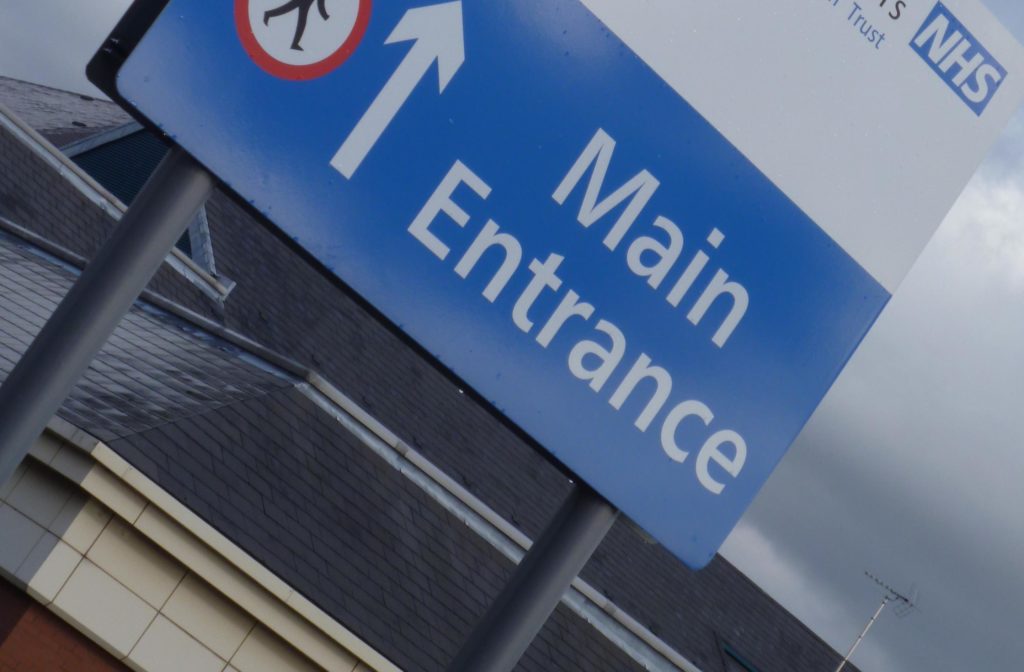
Suicide is the second leading cause of death in young people aged 15-24 years (Patton et al., 2009). This raises the question: what treatment is most effective in reducing the number of suicide attempts (SA) and other types of self-harm (SH) in adolescents? This question is of great public health concern, particularly as no single effective therapeutic intervention (TI) has been identified in reducing self-harm in adolescents, despite numerous large-scale randomised controlled trials (RCTs).
We conducted the first meta-analysis of RCTs to specifically evaluate TIs in reducing SH in adolescents (Ougrin et al., 2015), and found a small effect of three specific interventions on reduction of self-harm:
- Dialectical behaviour therapy
- Mentalisation based therapy
- Cognitive behavioural therapy.
In a more recent study and considering the importance of overall family functioning as risk factors for SH, David Cottrell and colleagues (Cottrell et al., 2017) have led one of the largest and most expensive multi-centre RCTs in the field of adolescent self-harm: the Self-Harm Intervention: Family Therapy (SHIFT) trial. The SHIFT study used an impressive 40 UK Child and Adolescent Mental Health Services (CAMHS) centres to determine if family therapy could be offered as an evidence-based intervention to reduce repeated self-harm in adolescents.

No single effective therapeutic intervention has been identified in reducing self-harm in adolescents, despite numerous large-scale randomised controlled trials (RCTs).
Methods
The study recruited 832 adolescents aged 11-17 years, who had self-harmed at least twice before being referred to CAMHS. As the self-harm nomenclature varies across countries and cultures, the SHIFT study defined self-harm as any form of intentional nonfatal self-poisoning or self-injury (such as, cutting, consuming excess medication, attempted hanging, self-strangulation, jumping from height, and running into traffic) regardless of suicidal intent. Exclusion criteria included serious risk of suicide, moderate to severe learning disabilities, insufficient proficiency of English, among others.
Families were randomly assigned (1:1) to receive either family therapy or treatment as usual. Family therapy was manualised and delivered by qualified and experienced family therapists, delivered monthly for 6 months, while treatment as usual was offered by local CAMHS teams and was unrestricted, with the chance to refer patients for additional specialist assessments or treatments. A range of assessments and questionnaires were administered at baseline and 3, 6, 12, and 18 months after randomisation. Hospital attendance data were obtained.
Results
- The baseline characteristics between family therapy (n=415) and treatment as usual groups (n=417) were fairly similar at random group assignment
- Primary outcome was repetition of self-harm leading to hospital attendance during the 18 months after randomisation. Hospital attendance figures for repeat SH events were not significantly different between family therapy and treatment as usual
- Secondary outcomes included cost per SH event avoided due to family therapy, and family therapy was found to be less cost-effective than treatment as usual
- Other secondary outcomes included selected characteristics of future SH episodes, family functioning, and overall emotional and behavioural difficulties, among others. While there was a substantial loss of follow up for secondary outcomes, those in family therapy reported significantly better behavioural outcomes compared to treatment as usual, for both the SDQ, as well as young person suicidal ideation, and caregiver family functioning
- Those in the family therapy group who had difficulty discussing their feelings had an increased risk of self-harm, while those who had greater ease reporting their feelings had a lowered risk of self-harm, when compared to treatment as usual.

Hospital attendance figures for repeat self-harm events were not significantly different between family therapy and treatment as usual.
Conclusions
One of the largest and most expensive studies done for adolescents who have self-harmed (the SHIFT trial) has shown no benefit from family therapy compared to treatment as usual, either in reduction of hospital visits, or cost-effectiveness.
Several secondary outcomes suggest that family therapy may be a promising and effective treatment at least for some young people, despite no reduction in hospital visits, e.g. improved behavioural and emotional outcomes, less risk for those at ease with discussing feelings.
Lack of treatment efficacy findings (such as those demonstrated from the SHIFT trial) are very important to the field, yet future research is still needed to determine which type of psychological therapy is most effective for adolescents who self-harm.

The SHIFT trial has shown no benefit from family therapy compared to treatment as usual for adolescents who self-harm, either in reduction of hospital visits, or cost-effectiveness.
Strengths and limitations
Strengths of the study lie in using a very reliable and complete primary outcome derived from hospital records, as well as a carefully conducted health economic assessment.
In terms of limitations:
- The SHIFT study was one of the most expensive RCTs conducted in the field of adolescent self-harm, therefore an initial small proof-of-concept trial may have been a practical first step
- The family therapy intervention only included 6-8 monthly sessions, which is a much lower treatment dose when compared to more effective treatments (as required in dialectical behaviour therapy, for example)
- Hospital attendance as a primary outcome measure may not have been the optimal choice, as many self-harm episodes may go untreated, may not be severe enough to require hospital treatment or may be unknown to parents.

The use of hospital administrative data and detailed health economy assessments are important accompaniments to research trials.
Implications for practice
Given the heterogeneity of self-harm, understanding which type of treatment is most effective for adolescents at risk of suicide can be a challenging, but nonetheless a paramount endeavour that requires further attention.
There are several unpublished protocol studies of RCTs for this subject population (Rees et al., 2015; van Spijker et al., 2015; Haddock et al., 2016) and studies in progress (Asarnow and Clarke, 2017; Boudreaux and Kiefe, 2017; Kemp, 2017), which can hopefully shed further light on effective interventions for adolescents at-risk from suicide.
As dialectical behaviour therapy, mentalisation-based therapy and cognitive behavioural therapy have been shown to be promising approaches in reduction of self-harm (Ougrin et al., 2015), the involvement of family in any therapy should be further explored.

Future research is still needed to determine which type of psychological therapy is most effective for which adolescents at risk of self-harm and suicide; family work is likely to remain an important element of any therapy.
Conflicts of interest
None
Links
Primary paper and Commentary
Cottrell, David J et al. (2018) Effectiveness of systemic family therapy versus treatment as usual for young people after self-harm: a pragmatic, phase 3, multicentre, randomised controlled trial. The Lancet Psychiatry, 12 Feb 2018.
Ougrin, D., & Asarnow, J. R. (2018). The end of family therapy for self-harm, or a new beginning? The Lancet Psychiatry, 5(3), 188-189.
Other references
Asarnow, J.R., and Clarke, G. (2017). “Randomized controlled trial of stepped care for suicide prevention in adolescents and young adults.”. (https://clinicaltrials.gov: NIMH)
Boudreaux, E., and Kiefe, C. (2017). ” A System of Safety: Preventing Suicided Through Healthcare System Transformation”. (https://clinicaltrials.gov).
Haddock, G., Davies, L., Evans, E., Emsley, R., Gooding, P., Heaney, L., … & Pratt, D. (2016). Investigating the feasibility and acceptability of a cognitive behavioural suicide prevention therapy for people in acute psychiatric wards (the ‘INSITE’trial): study protocol for a randomised controlled trial. Trials, 17(1), 79.
Kemp, K. (2017). “Implementing a Brief Suicide Intervention for High Risk Youth With Front-Line Juvenile Justice Staff”. (https://clinicaltrials.gov).
Ougrin, D., Tranah, T., Stahl, D., Moran, P., & Asarnow, J. R. (2015). Therapeutic interventions for suicide attempts and self-harm in adolescents: systematic review and meta-analysis. Journal of the American Academy of Child & Adolescent Psychiatry, 54(2), 97-107.
Patton, G. C., Coffey, C., Sawyer, S. M., Viner, R. M., Haller, D. M., Bose, K., … & Mathers, C. D. (2009). Global patterns of mortality in young people: a systematic analysis of population health data. The lancet, 374(9693), 881-892.
Rees, C.S., Hasking, P., Breen, L.J., Lipp, O.V., and Mamotte, C. (2015). Group mindfulness based cognitive therapy vs group support for self-injury among young people: study protocol for a randomised controlled trial. BMC psychiatry 15, 154.
van Spijker, B. A., Calear, A. L., Batterham, P. J., Mackinnon, A. J., Gosling, J. A., Kerkhof, A. J., … & Christensen, H. (2015). Reducing suicidal thoughts in the Australian general population through web-based self-help: study protocol for a randomized controlled trial. Trials, 16(1), 62.
Photo credits
- Photo by Guillermo Sánchez on Unsplash
- Photo by Luke Porter on Unsplash
- Photo by Jamie Street on Unsplash
- Photo by Philip Veater on Unsplash
- Photo by Igor Ovsyannykov on Unsplash

Hello, thank you for your interest in our work. There is slight misunderstanding of the cost-effectiveness results in your blog. While family therapy was found to be less cost-effective than treatment as usual when considering reduction in SH event. The outcome of major interest for NICE and the NHS is QALYs (Quality-Adjusted Life Years) and in that context, Family therapy was not found cost-effective as above the NICE threshold of £20K per QALY however this does not mean that treatment as usual is cost-effective. It means that the QALY gains from family therapy is beyond the budget that the NHS can allow for the therapy to be prescribed to all adolescents who self-harm.
All the best,